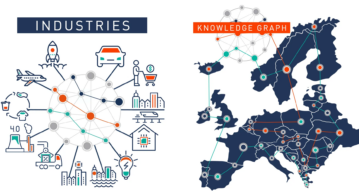The technology used to run today’s data-centric enterprises relies on openness, modularity, and interoperability. Closed systems are quick to enter obscurity and represent poor investments. IT functions must support and run traditional, converged, and hyperconverged platforms. Consequently, management systems’ integrations must be adaptable for the sake of the legacy stack.
However, that adaptability should also ensure future compatibility with newer technologies as they come onstream.
In the 2+ years since Cisco Systems entered the hyperconverged infrastructure market ‘proper’, the company has attained a number of commercially-valuable industry accreditations, including being named a Gartner Magic Quadrant Leader for HCI. That’s unsurprising given the company laid the groundwork for hyperconverged infrastructure ten years ago this year, with its launch of the now-ubiquitous Cisco Unified Computing System (UCS). Combining and abstracting compute and interconnects gave companies that adopted UCS, for the first time, a genuinely elastic platform that could respond as business needs changed, at speeds that were unheard of.
The various models of HyperFlex are built on the Cisco UCS platform and offer a series of unique advantages over rivals – perhaps it is too early to say over traditional hyperconvergence. Nevertheless, Cisco calls its HyperFlex range the next-generation of hyperconverged technology, and it comes at a time of change both in the HCI technology marketplace and the way in which different topologies are considered most efficient.
Instead of an oft-quoted ‘stampede’ to the cloud, most enterprises use a multi-cloud, hybrid model of internal data centers, edge deployments, and public cloud facilities that varies in mix, on demand. Next-generation hyperconverged systems recognize this reality and are purposely conceived and realized to assimilate into that landscape. In hybrid cloud operating models, the HyperFlex API-driven architecture comes into its own: it’s a solution that makes bursting to the cloud at peak times possible, using the same platform that also deploys and manages edge-based installations, and the on-prem data center.
Cisco’s multi-cloud approach means organizations, therefore, save significant running costs and CAPEX by slashing redundancy and over-provisioning of resources. HyperFlex means capitalizing on baked-in, de-duping and data compression on the fly to maximize storage and assure the security of backups and data recovery.
With Cisco UCS and HyperFlex, centralized policies control core data center functions, like in-house databases, or SAP workloads, allocating resources to and from tier-one apps as necessary. In addition, what makes HyperFlex unique in the hyperconvergence market is that users are able to scale compute and storage independently of one another, so solutions that are gradually being piloted (like AI/ML) can be better managed with features such as automated resource handling, and real-time scaling.
HyperFlex fully supports ESXi and HyperV, as well as containerization, so testing and DevOps environments can be granted the facilities needed, at scale, on demand. Testing, development and production environments sharing a platform means iterative app releases are much faster. Moreover, testing phases are shortened massively, as the only difference between testbed and production is scale, not structure.
The interoperability, modularity and broad feature set of Cisco HyperFlex belies the notion that hyperconvergence is only suitable for specific workloads and large enterprises. Edge-based deployments of just two nodes of HyperFlex, for example, mean that any size of business can start small and grow without having to re-invest multiple times in “more suitable” hardware and systems.
As you might expect from the company that became, and still is, the gold-standard in networking, data security joins automation and a multi-cloud approach as the third pillar that underpins the HyperFlex offering. Plus, because Cisco’s pedigree is one that’s made it a vital component in data centers (and therefore at the heart of data-driven businesses the world over), its customers can benefit from its partnerships with backup solutions like Veeam, Commvault, and Cohesity, plus dozens of Cisco Validated Designs (CVDs) to streamline deployment of mission-critical enterprise applications like SAP.
The breadth of Cisco’s technology partnerships means its CVDs are available in multiple verticals, ready to deploy and begin the process of capitalizing on the savings and potential offered by adopting a hyperconverged approach. With a range of enterprise agreement licensing models for large organizations, plus Intersight cloud-based management (that ships free with Edge and HyperFlex), now is the time to start investigating next-generation hyperconvergence.
To reiterate, don’t be shy of the “next-gen” reference: this may be cutting-edge tech, but it’s proven, business-oriented, and enterprise-ready. What’s more, HyperFlex’s modular, backward compatibility provides a superior level of future-proofing compared with competing offerings.
Read more on how to “Modernize Your Data Center” on Cisco’s website, where customer stories show how HyperFlex is bringing new levels of agility, speed and performance to businesses across the globe.









